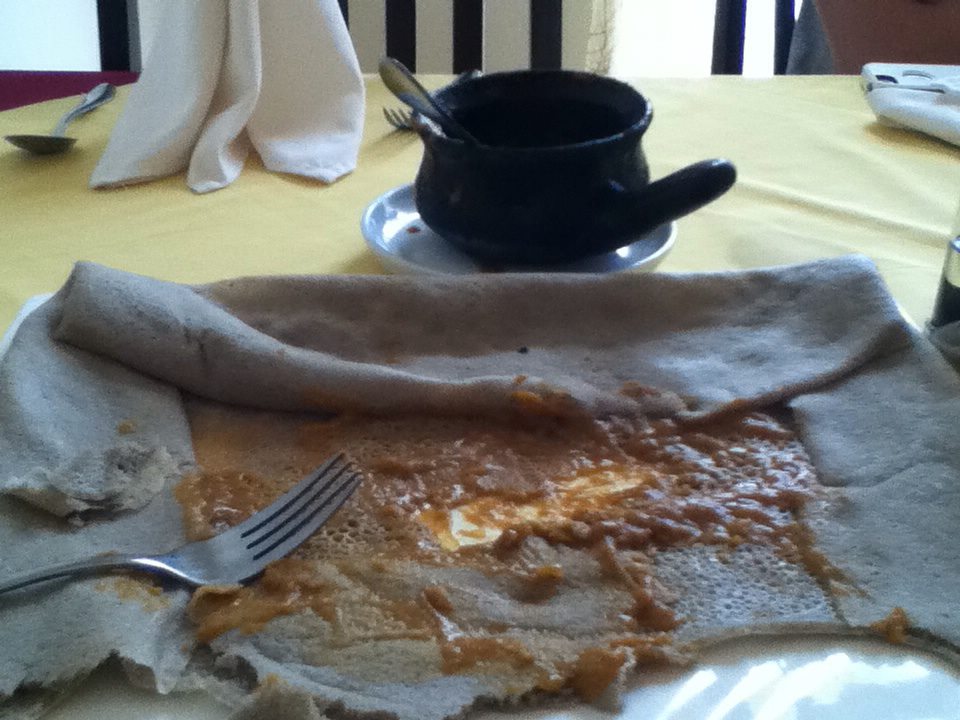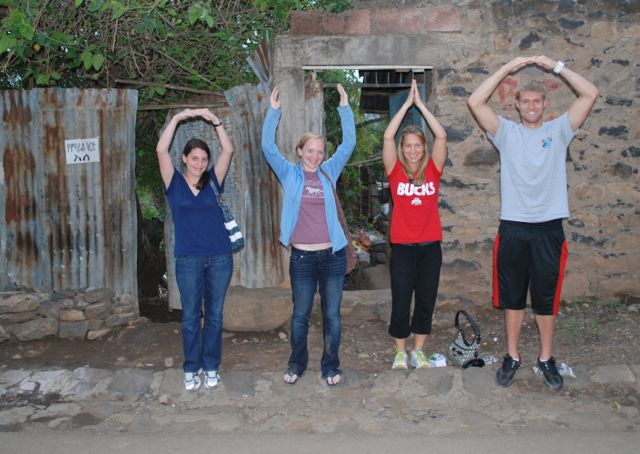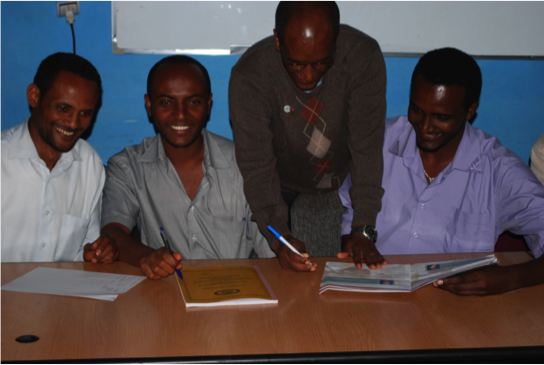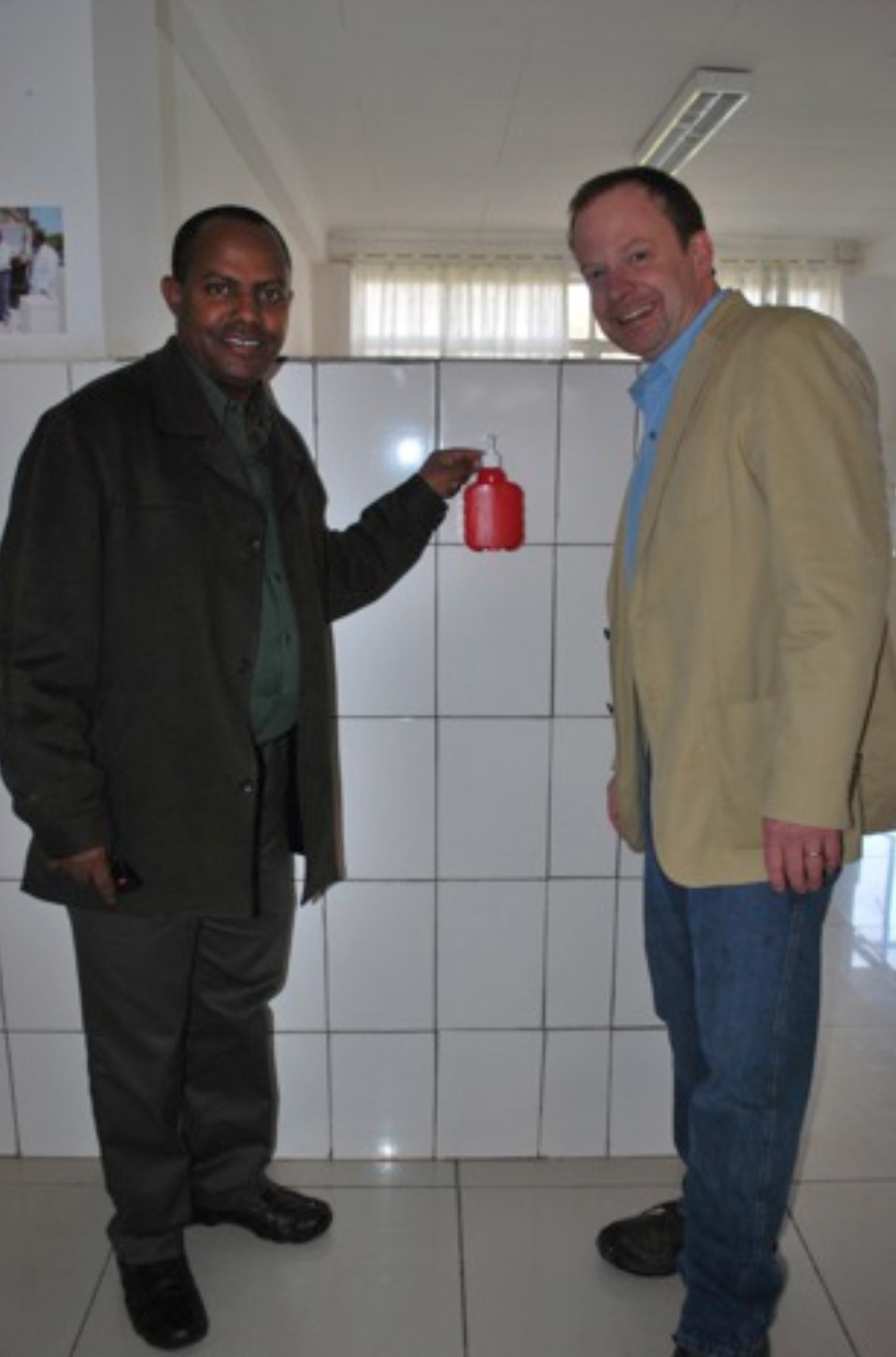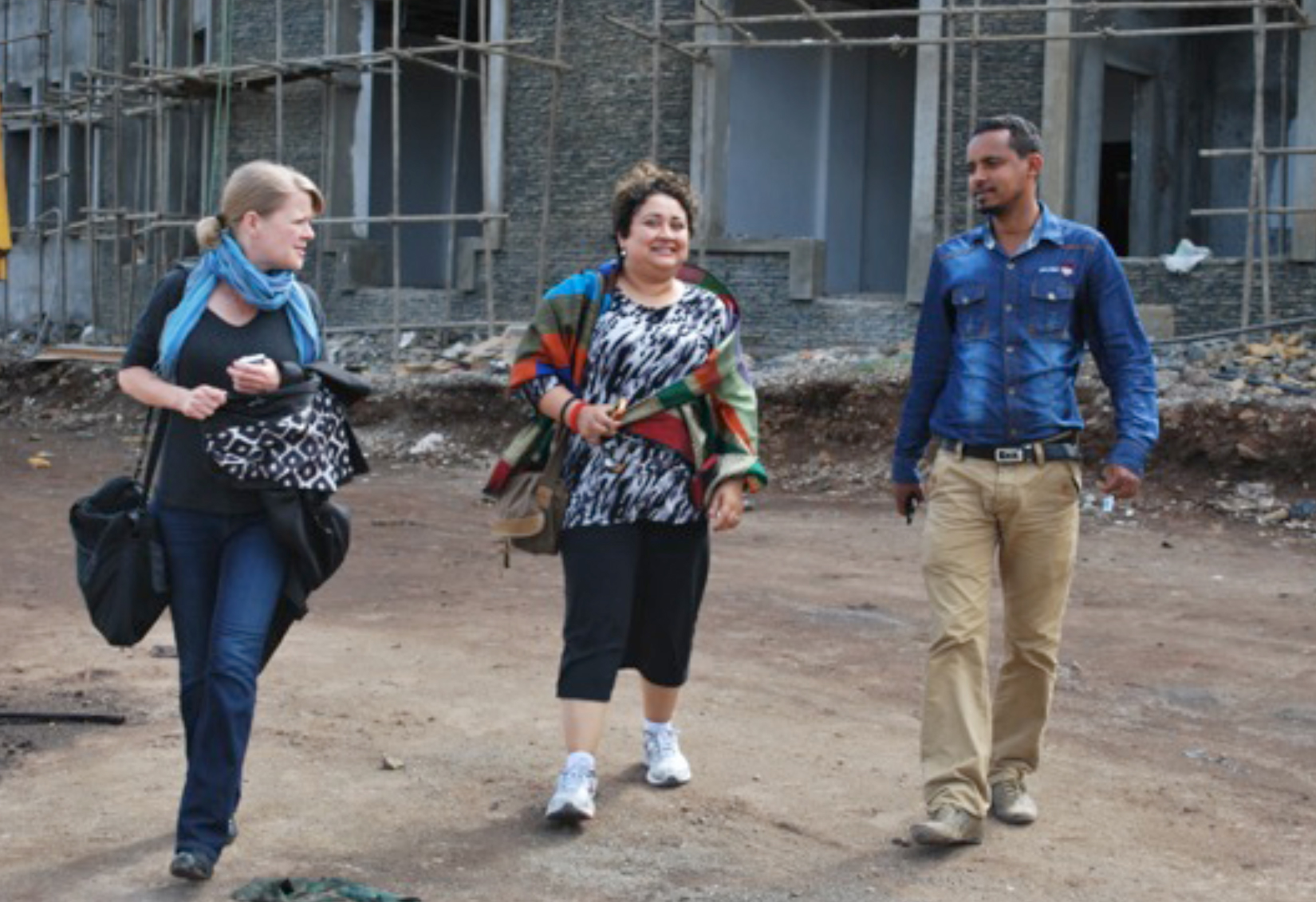By Karissa Magnuson
Student, Ohio State College of Veterinary Medicine
I happen to love bread and carbs in general. At home, I love making homemade bread and even have my own bread machine in my apartment, so I was curious about the bread of Ethiopia. The staple bread, although it is not really like our bread, is injera. It is most comparable to flatbread or possibly a tortilla or crepe. The main differences are its spongy texture and that it is made from a completely different type of grain called teff.
Teff is a cereal grass and is only found in Ethiopia. It is ground into flour and then is mixed with water and baked to make injera.
Injera is included in almost every native dish in Ethiopia, and it is often used to hold the dish, acting as both a plate and utensils. Ideally, you use the injera to wrap up whatever you ordered inside like a seasoned meat and then eat both the injera and meat. (If you are like me, you end up using a fork at some point, because without a fork, it is quite a messy undertaking.)
Not only is injera used as an edible plate and utensil, it is also often the main course. For instance, the other night, our partners asked if I wanted to try Firfir. To me this dish looked like some sort of meat with mashed up beans served on top of injera. Well, I was having a hard time understanding the ingredients they were listing off, and they kept shaking their heads when I repeated back what I thought were the ingredients until I realized that part of the dish which I thought was meat was not meat but shredded up injera served in a sauce with seasoning.
So there you have it — injera — the staple bread of Ethiopia. By the way, for those who are gluten intolerant, teff is gluten free.
How to Make Injera: https://www.youtube.com/watch?v=UDv15Wb0DE0
